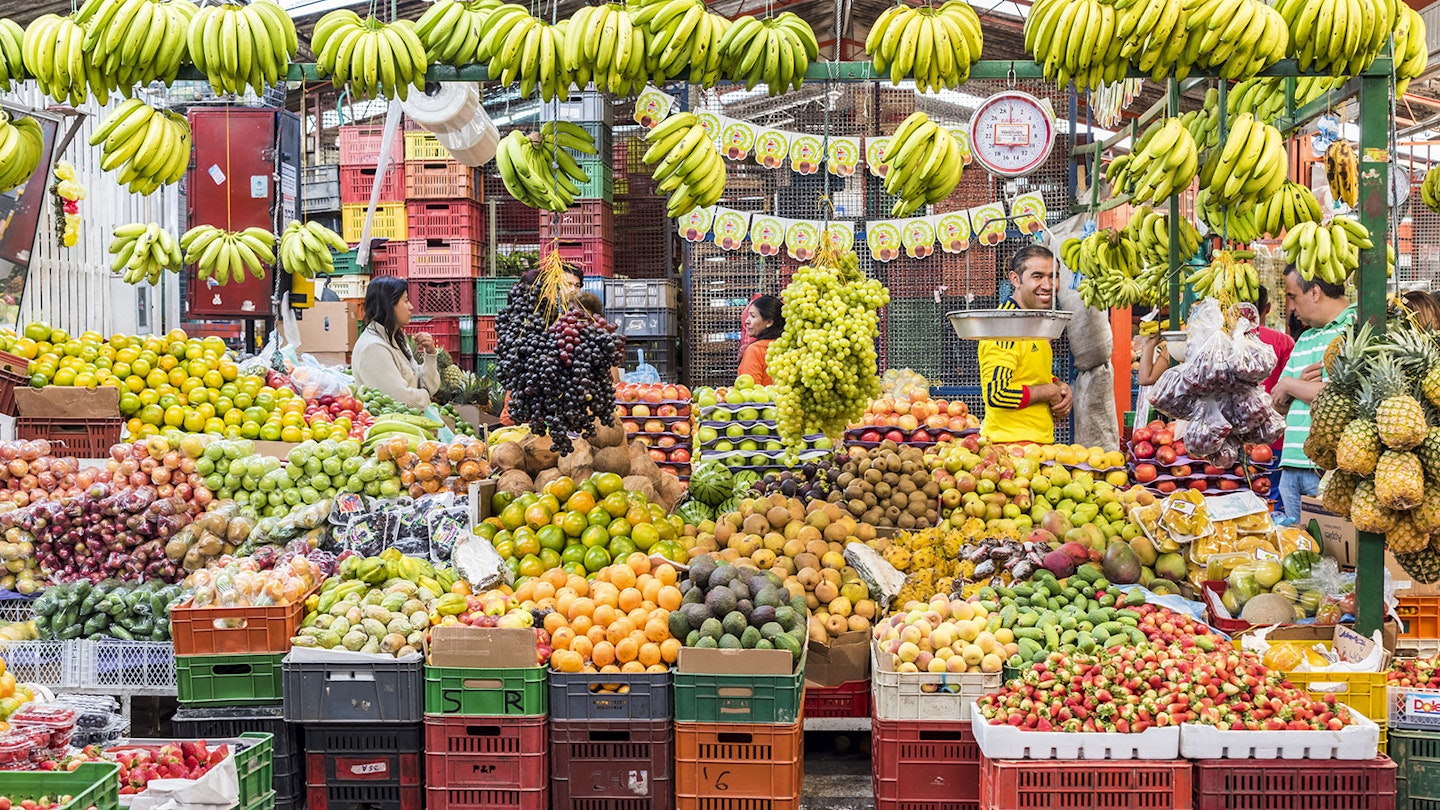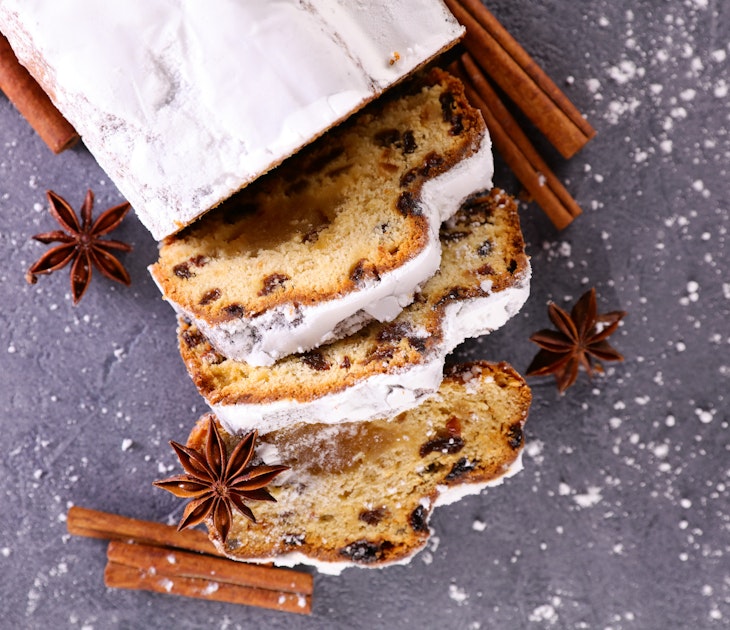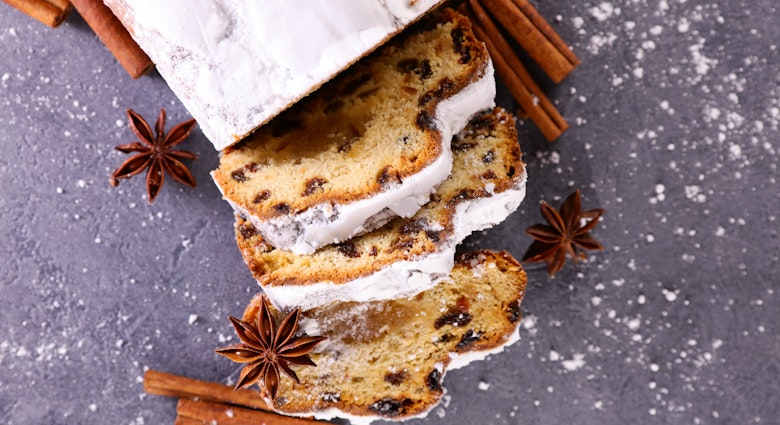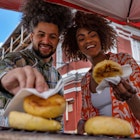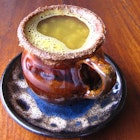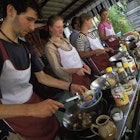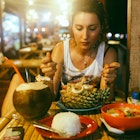If there's one thing you can rely on when travelling around Colombia, it’s that you'll never go hungry. Colombia’s medley of environments, immense variety of fresh produce and cultural diversity have created micro-gastronomic pockets. Each region is like an individual country, with distinct traditional cooking styles and use of ingredients making this destination a rising culinary star. Here are some food experiences you shouldn’t miss.

Meander local markets
Every morning, fresh produce from around the country arrives at Bogotá’s Plazas de Mercados (notable markets include Paloquemao and Las Ferias). Lacking tourist crowds, these markets retain an air of traditional authenticity. Be hypnotised by a mind-boggling array of smells, colours and tastes from Colombia’s extraordinary biodiversity. Plenty of exotic fruits like guanabana, lulo, níspero, and borojó are on hand daily.
Tuck into one of many typical bogotano breakfasts for a local treat. A good choice is here is a tamal – a savoury mix of corn dough filled with meat, potatoes and vegetables all wrapped in a banana leaf. Pair this with a chocolate completo; hot chocolate, almojabana (cheese bread), and cheese. It’s worth abiding by the local tradition of plonking the cheese into the mug and later spooning up the gooey, chocolatey cheese.
If you’re in Medellin, mingle with local paisas at the Sunday Farmer’s Market in El Poblado, while strolling between tables piled high with fresh, organic produce, savoury bread, and homemade jams and sauces. For a rougher yet honest market adventure, explore Cartagena’s Mercado Bazurto; budget food and exotic fruit juice blends galore.
Tradition meets contemporary fine dining
Recreating and renovating traditional Colombian dishes is the current trend among the country’s top chefs. By bringing the best regional ingredients together, they’ve have been able to play with different flavours, colours and preparation techniques to create new ways of interpreting Colombian cuisine.
Choosing a place to eat within Bogotá’s Zona G (Gourmet Zone) will be a difficult task as the area hosts some of the city’s most respected restaurants. Here you’ll find world-famous Criterion (criterion.com.co), often honored as one of the best in Latin America, with its unique mix of French and Colombian styles. Head downtown to discover the kaleidoscopic fusion of unusual ingredients and ancestral knowledge at Leo Cocina y Cava. Or enjoy large servings of simple yet original dishes designed to be shared and unhurriedly appreciated at Tábula (elorigendelacomida.co).

Menú del día: the Colombian lunch
As cities grew and daily life accelerated, workers didn't have time to go home to eat their traditional home-cooked lunch. So small, family-run establishments touting ‘menus of the day’ started to fill the gap to provide affordable meals to the working public. They remain a vital part of the country’s eating habits. The ‘menu of the day’ includes a soup (with regional variations), the main dish of salad, rice, plantain, beans and a choice of meat, and a beverage. These restaurants can be found everywhere; just look for happy lunch crowds and a ‘menú del día’ sign. For a slightly fancier lunch, look for the all-time favourite Andean soup, ajiaco. Made with chicken, a trio of native potatoes, corn and guasca herb, ajiaco can be a warm treat on a cold, rainy day in Bogotá.
If you’re ravenous, the national dish, bandeja paisa, will soothe all hunger pangs. The ‘tray’ consists of ground meat, chorizo, chicharrón (fried pork rinds), red beans, a fried egg and avocado. You'll want to nap afterwards. In Bogotá, La Herencia (restaurantelherencia.com) offers a wide range of regional Colombian cuisine. Vegetarians can enjoy set lunch meals at Quinua y Amaranto and Restaurante Vegetariano El Integral Natural.
Pacific coast specialties
With a large Afro-Colombian population and numerous indigenous communities, the remote Pacific coast boasts an incredibly diverse culinary heritage. Seafood constitutes a great part of the diet here and native recipes include paellas, crab soup, pickled fish and the Pacific’s most representative dish, piangua, a nutrient-rich black clam. Serving ancestral cuisine from the Pacific in Bogotá is the innovative seafood restaurant Mini-Mal. The fresh and exotic ingredients served in an informal yet elegant urban setting is an unparalleled food experience.
Popular drinks from this region are lulada – an icy, sweet drink of lulo and lime juice – and champús. Champús is a very traditional indigenous drink made with corn, pineapple, lulo, cinnamon, cloves, and orange tree leaves. For an energy boost (and a natural aphrodisiac), try the ever-popular chontaduro; a sweet, starchy bright orange fruit eaten with honey, lemon, or salt. The streets of Cali are replete with chontaduro street vendors.
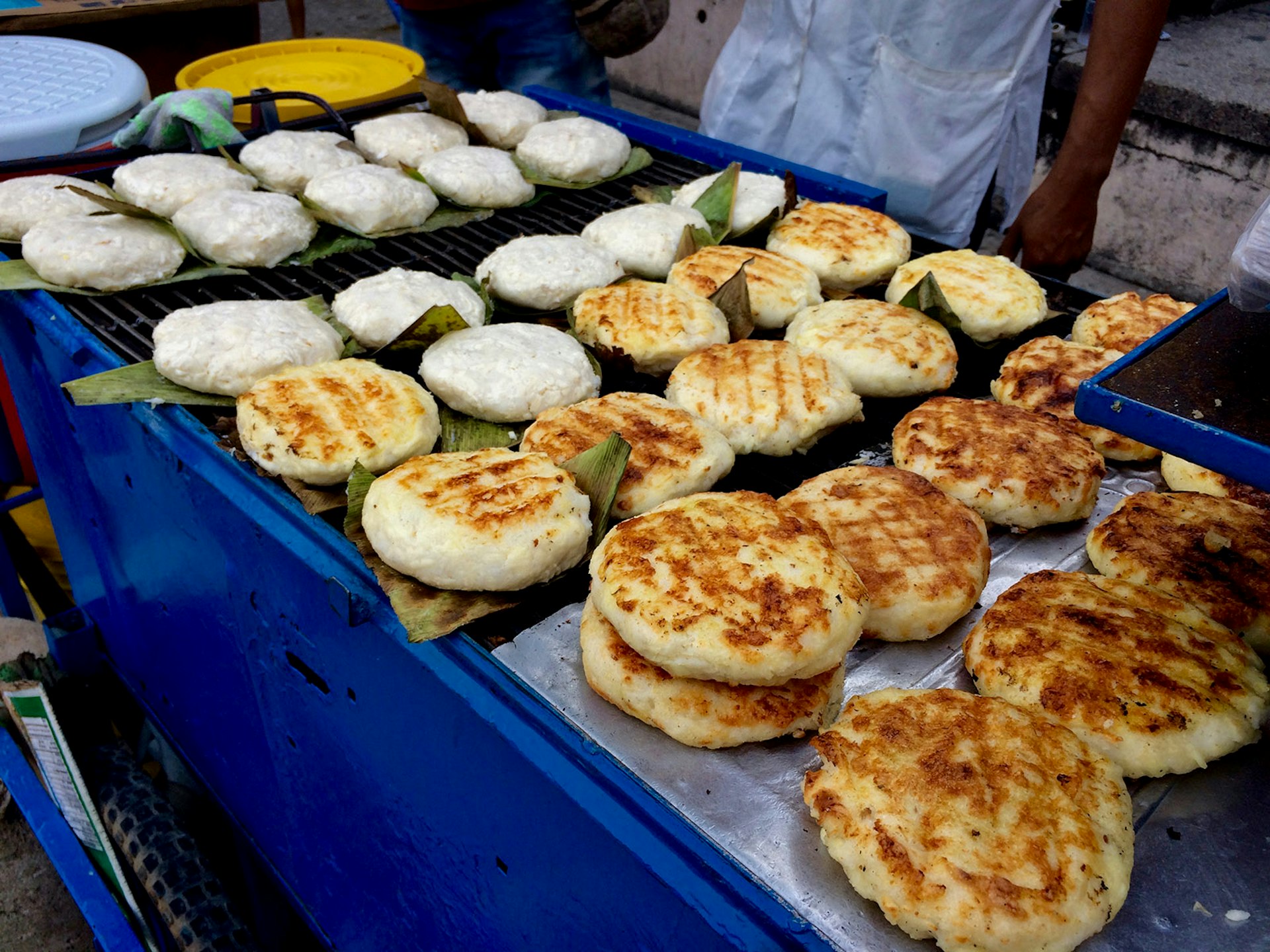
Explore street food
Street food in Colombia is more than just peanuts and fizzy drinks; indeed, you can meet more than your day’s basic nutritional needs munching on street vendors’ snacks. The portions can be hearty and make for an inexpensive way to interact with the local culture. Start by nibbling on arepas, ‘corn cakes’ made with cornflour and water. Depending on the region, arepas can be flat and crunchy; round, sweet, and soft; thick, cheesy and buttery; or eaten with cheese, eggs or meat.
Treat yourself to deep-fried empanadas, stuffed with meat and vegetables and dipped in ají, the ubiquitous tomato, onion, cilantro salsa that’s added to everything from soups and stews to beans and rice. Other cheap, tasty snacks include mango biche (green mango with lime and salt), pandebonos (baked cheese bun), buñelos (fried balls of cheesy dough) and grilled chorizo, meat skewers and corn on the cob. Get your caffeine fix with a hot tinto – sweet black coffee in a tiny plastic cup. It’s sold every few metres all around the country. Drinking tintos is a social practice, so don't be surprised if the vendor stops to have a chat.
Savory meats in the eastern plains
In the eastern plains of Colombia lies Los Llanos, a vast grassland savanna home to Colombia’s cowboys – los llaneros, ‘plains people’. Zebu cattle rearing is the region’s principal profession, so these gaucho-like ranchers are experts in meat. The most famous dish is the Ternera a La Llanera, also known as Mamona, which consists of large pieces of veal that have been slow roasted for hours over a fire. The meat is usually accompanied by yuca and plantain and washed down with guarapo, sugar cane juice. Although Los Llanos is still undiscovered by mainstream tourism, the breathtaking plains and traditional cuisine are easily accessible from the gateway city of Villavicencio. And if you're not quite ready to get on the saddle, Asadero Capachos in Bogotá serves authentic llanero cuisine.

Caribbean dreaming
Fresh, fried and fishy are the fundamentals of El Caribe cooking, and you’ll find plenty of it in Colombia. Appreciate breezy early mornings while chomping on a deliciously life-shortening arepa de huevo (deep-fried arepa with an egg inside). Restore the balance with a fresh fruit juice of your choice (mango and maracuyá is a winner) or coconut water slurped straight from the husk. A typical lunch served everywhere along the coast is fried fish, coconut rice, and patacones (fried green plantains). Escape the crowds and explore the remote Santuario de Flora y Fauna Los Flamencos in La Guajira, culminating the adventure at a quiet beach restaurant with an ice-cold beer and your choice of the catch of the day. Options may include mojarra, red snapper or lobster, the local speciality.
In Cartagena’s stunning Old Town and Santa Marta’s beachfront, devouring a cazuela de mariscos is essential. The coconut milk based stew contains a variety of fish, shrimp, lobster, prawns, oysters and calamari. It is the ultimate seafood bonanza. Freshen up any time of the day with a limonada de coco; a sweet, icy, and frothy blend of coconut cream and lime juice.
